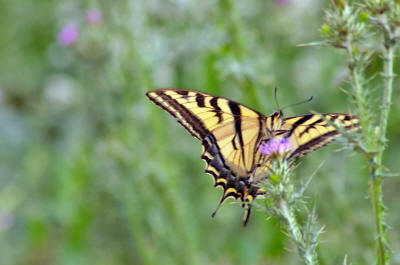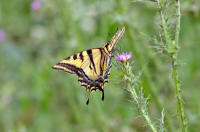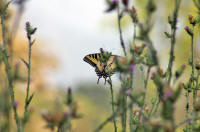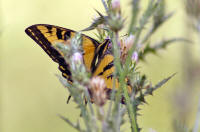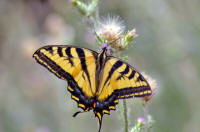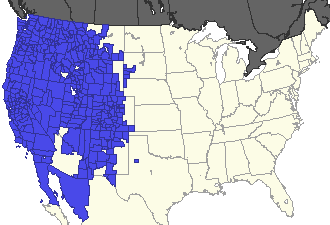|
United States Range Map |
|
California Range Map |
|
|
|
|
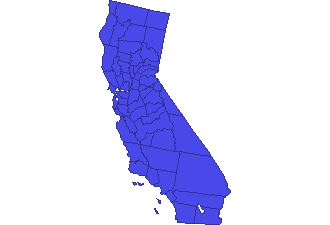
|
|
Identification: |
|
Life history:
|
|
Upperside of
hindwing with upper-most marginal spot yellow or
lacking. Underside of
forewing with separate yellow spots forming marginal
band. Hindwing has narrow marginal spots and no orange tint
except for 2 spots near end of inner margin. |
|
Males patrol canyons or hilltops for receptive females.
Females lay eggs singly on surface of host plant leaves.
Caterpillars feed on leaves and rest on silken mats in
shelters of curled leaves. Chrysalids hibernate. |
|
Flight: |
|
Wing Span: |
|
One flight from June-July. |
|
2 3/4 - 4 inches (7 - 10 cm). |
|
Caterpillar Hosts: |
|
Adult Food: |
|
Leaves of cottonwood and aspen (Populus), willows (Salix),
wild cherry (Prunus), and ash (Fraxinus). |
|
Nectar from many flowers including thistles, abelia,
California buckeye, zinnia, and yerba santa. |
|
Habitat: |
|
Season: |
|
Woodlands near rivers and streams, wooded suburbs, canyons,
parks, roadsides, and oases. |
|
June-July (one flight) in much of range, but much of year
(2-4 flights) along Pacific coast. |
|
Remarks: |
|
Conservation: |
|
|
|
Not usually required.
NatureServe Global Status:
G5 - Demonstrably secure globally, though it may be quite
rare in parts of its range, especially at the periphery.
Management needs: None noted.
|
|
Sources used to
Construct this Page: |
|
|
|
|
